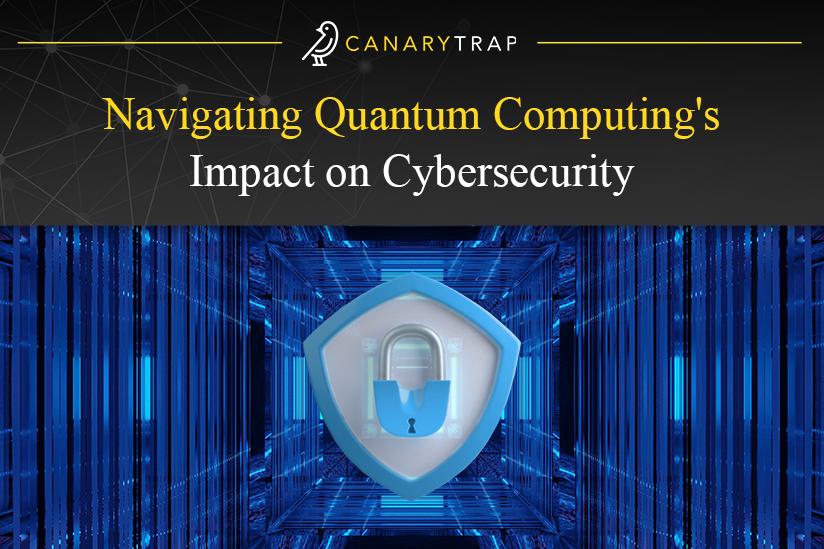Cybersecurity Culture
- March 15, 2024
- Canary Trap
In today’s fast-paced digital landscape, the idea of a cybersecurity culture has evolved beyond technical terminology to become a cornerstone for organizational resilience and success. It goes beyond firewalls, encryption, and incident response plans; it’s about ingraining a pervasive awareness and consciousness throughout every level of an organization. The importance of cultivating a cybersecurity culture cannot be emphasized enough, as it directly impacts an organization’s ability to thwart cyber threats, safeguard sensitive data, and establish unwavering trust with clients and stakeholders.
At the core of a cybersecurity culture is its capacity to move beyond the conventional notion of cybersecurity as solely the responsibility of the IT department. Instead, it weaves through the entire organizational structure, shaping decision-making processes, daily operations, and the overall approach to risk management. It represents a proactive approach that surpasses a mere compliance-driven mindset, positioning organizations not just to survive but to excel in the challenges of the digital realm.
What is a Cybersecurity Culture?
At its core, a cybersecurity culture embodies the collective mindset, attitudes, and behaviors of individuals within an organization concerning information security. It’s not a static checklist of security measures but a dynamic integration with organizational values and practices.
In an article published by Upguard, it was explained that “while cybersecurity training can provide essential knowledge of good practices or the latest cyber threats, it doesn’t necessarily create daily engagement with critical cybersecurity practices. To develop a security culture, an organization must implement measures to shift focus toward building security awareness and developing healthy attitudes toward cybersecurity.”
This culture is characterized by an inherent understanding that cybersecurity is not just a checkbox to be marked but an ongoing commitment for every person in the organization. It involves fostering a sense of shared responsibility, where every employee becomes a stakeholder in the organization’s cyber defense. In essence, a cybersecurity culture must align the organization’s mission, vision, and values with the proactive protection of its digital assets. It’s a holistic approach that ensures cybersecurity is not seen as a hindrance but as a strategic enabler, fortifying the organization against the myriad of cyber threats in the digital landscape.
By understanding the multifaceted nature of a cybersecurity culture, organizations can create an environment where security is not an afterthought but an integral part of every operation. This integration fosters a resilient organization that can adapt to the evolving threat landscape, respond effectively to incidents, and, most importantly, establish a proactive defense against cyber adversaries.
Why Is Creating a Cybersecurity Culture So Important?
In the contemporary digital landscape, where the stakes of cyber threats are higher than ever, implementing a robust cybersecurity culture is indispensable for every organization. With cybercriminals employing increasingly sophisticated methods, organizations must not only rely on technological solutions but also cultivate a vigilant and security-oriented mindset among their employees.
According to Medium, “Building a strong cybersecurity culture means promoting awareness, implementing best practices, and fostering a security-conscious mindset. You can empower your employees to become the first line of defense against cyber threats.” A robust cybersecurity culture creates a collective defense mechanism where every individual becomes an active participant in safeguarding the organization’s digital assets.
Furthermore, the importance of a cybersecurity culture extends to the protection of sensitive information and data. In an era where data is a valuable currency, organizations store vast amounts of proprietary information, customer data, and intellectual property. A breach can have severe consequences, ranging from financial loss to reputational damage. A cybersecurity culture ensures that employees understand the gravity of their role in preserving the confidentiality, integrity, and availability of this sensitive information.
Beyond internal considerations, a strong cybersecurity culture also plays a pivotal role in building trust with clients and stakeholders. In an interconnected business environment, partners, clients, and customers expect their data to be handled with the utmost care and responsibility. Thus, demonstrating a commitment to cybersecurity not only meets regulatory requirements but also fosters a sense of trust, enhancing the organization’s reputation and standing in the market.
What Are the Challenges of Creating a Cybersecurity Culture?
While the benefits of a cybersecurity culture are evident, developing and sustaining a robust cybersecurity culture comes with its own set of challenges. These hurdles can impact the effectiveness of security measures and require thoughtful consideration.
In an IT World Canada Interview with Terranova Security Chief Information Security Officer (CISO) Theo Zafirakos, it was explained that: “Cybercriminals have moved from targeting the machine to targeting the human. We see a lot of evolution in the way attacks are generated, created or even conducted. Artificial intelligence is also going to contribute to more sophisticated and error-proof attacks and scenarios.”
Let’s dive deeper into some of the key challenges of building a cybersecurity culture:
- Employee Resistance and Awareness
Effective implementation of cybersecurity measures hinges on overcoming employee resistance. Lack of awareness regarding the significance of cybersecurity can contribute to this resistance. However, organizations must prioritize comprehensive education and communication programs to enlighten employees about the personal and collective benefits of adhering to cybersecurity measures.
- Balancing Security Measures with Productivity
Striking the right balance between stringent security measures and organizational productivity is crucial. Overly restrictive measures can impede efficiency, while lax protocols may compromise security. That’s why organizations need to integrate security seamlessly into existing processes to ensure that measures align with operational requirements without hindering productivity.
- Adapting to Evolving Cyber Threats
The dynamic nature of cyber threats needs constant adaptation of security protocols. Organizations should establish agile and adaptive cybersecurity cultures that can swiftly respond to emerging threats to ensure that defense mechanisms remain resilient in the face of evolving challenges.
Navigating these challenges demands strategic foresight and a commitment to ongoing improvement. Therefore, tailoring approaches to the unique characteristics and needs of the organization is essential, because it will foster a culture where cybersecurity becomes an integral part of the organizational DNA.
Best Practices for Creating a Cybersecurity Culture
Cultivating a cybersecurity-conscious environment requires more than just awareness; it demands a strategic approach that integrates security into the core fabric of an organization. Here are some key best practices to foster a robust cybersecurity culture:
- Leadership Involvement and Commitment
Leadership plays a pivotal role in shaping organizational culture, including its approach to cybersecurity. Leaders should actively champion and prioritize cybersecurity initiatives, setting a tone that emphasizes the importance of security measures throughout the organization. When leaders demonstrate commitment, employees are more likely to follow suit.
According to cybersecurity experts at Tech Target, “Building a security culture requires people skills. Taking an empathetic approach, making cybersecurity personal and relevant to your audience, acting as a close partner to the product and engineering teams, and aligning the security culture with the values of the broader corporate culture are all effective tactics for ensuring a successful security culture implementation.”
- Employee Training and Awareness Programs
Education is a cornerstone of a strong cybersecurity culture. Implementing regular training programs ensures that employees are equipped with the knowledge and skills to identify and respond to potential threats. This includes understanding the latest cybersecurity best practices, recognizing phishing attempts, and promoting a security-first mindset.
- Regular Assessments and Updates
Cyber threats evolve, and so should an organization’s cybersecurity measures. Regular assessments, including security audits and vulnerability testing, help identify potential weaknesses. Keeping software and systems updated will ensure that organizations have the latest security patches, minimizing the risk of exploitation by cybercriminals.
- Encouraging a Proactive Security Mindset
Cultivating a cybersecurity culture goes beyond compliance; it requires fostering a proactive security mindset among employees. Encouraging individuals to take responsibility for their role in the organization’s security posture creates a collective consciousness that contributes to a more resilient and secure environment.
Implementing these best practices contributes to the development of a cybersecurity culture that is not merely a set of rules, but a dynamic and integrated aspect of organizational operations. Leadership commitment, ongoing education, regular assessments, and a proactive mindset collectively build a security foundation that adapts to the ever-changing cybersecurity landscape.
Emerging Trends in Cybersecurity Culture
As the digital landscape continues to evolve, so do the trends that shape cybersecurity cultures within organizations. Staying ahead of emerging trends is crucial for maintaining robust defenses against evolving cyber threats. Here are some noteworthy trends influencing the landscape of cybersecurity cultures:
- Remote Work Security
The rise of remote work has introduced new challenges for cybersecurity. Organizations are adapting their cultures to ensure that remote employees follow secure practices, such as using virtual private networks (VPNs) and securing home networks. The emphasis needs to be on endpoint security and secure collaboration tools.
- Zero Trust Security Model
The Zero Trust model is gaining prominence as organizations shift from perimeter-based security to a more comprehensive approach. In a Zero Trust environment, no entity, whether inside or outside the organization, is trusted by default. This approach aligns with the evolving nature of cyber threats, emphasizing continuous verification and least privilege access.
- Behavioral Analytics
Behavioral analytics is becoming integral to identifying anomalous activities within an organization’s network. By analyzing patterns of behavior, organizations can detect unusual or suspicious actions that may indicate a potential security threat. This trend reflects a shift from solely relying on traditional security measures to incorporating more advanced, data-driven analytics.
- Automation and AI in Threat Detection
The integration of automation and artificial intelligence (AI) is transforming threat detection capabilities, since automated systems can rapidly analyze vast datasets, identify potential threats, and respond in real-time. This trend is streamlining security operations, which allows organizations to proactively address threats before they escalate.
- DevSecOps Integration
The integration of security into the DevOps (Development and Operations) process, known as DevSecOps, is also gaining traction. This approach emphasizes incorporating security practices throughout the software development lifecycle, ensuring that security is not an afterthought but an integral part of the development process.
In Conclusion
As we conclude our discussion on cybersecurity culture, it becomes clear that this is not just a task to check off a list, but a strategic necessity. It goes beyond meeting compliance requirements; it’s an ongoing investment in the resilience of the entire organization. Building a cybersecurity culture rests on the foundation of dedicated leadership, continuous learning, and the smart use of advanced technologies.
The heart of this cultural shift lies in securing individual entities while also bolstering the collective defense of our digital landscape. It’s crucial to understand that this commitment is not a one-time action but a promise of continual enhancement and a shared duty to safeguard the integrity of our interconnected digital future. In the ever-changing cyber landscape, a strong cybersecurity culture emerges as the central element, ensuring a safe and resilient tomorrow.
A robust cybersecurity culture is not just a series of practices or protocols; it embodies a mindset of readiness, resilience, and a joint obligation to strengthen our digital ecosystem. Therefore, as organizations embark on the path of cultivating a cybersecurity culture, they are not only protecting their own interests but actively contributing to the security of the entire digital realm.
SOURCES:
- https://www.upguard.com/blog/developing-a-culture-of-cybersecurity
- https://secureu.medium.com/the-importance-of-a-good-and-strong-cybersecurity-culture-in-the-workplace-cba00d3fb1b6
- https://www.itworldcanada.com/article/unveiling-the-hidden-challenges-of-cybersecurity-culture/547897
- https://www.techtarget.com/searchsecurity/tip/5-tips-for-building-a-cybersecurity-culture-at-your-company

